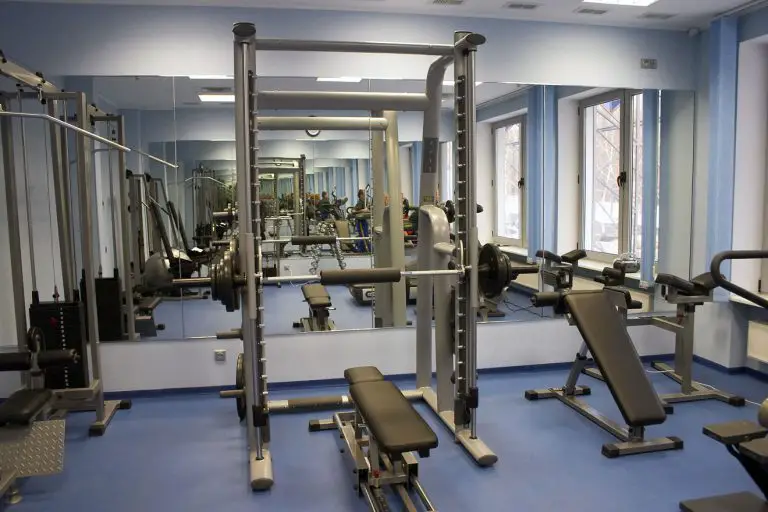Can resistance bands replace weights?
Key takeaways
- Resistance bands offer versatility and portability, making them ideal for travel and home workouts. They provide joint-friendly, continuous tension that can improve functional strength and flexibility.
- The limitations of resistance bands include a lack of heavy resistance needed for significant muscle growth and challenges in tracking progressive overload. They may also wear out over time.
- Choosing between bands and weights depends on fitness goals, with bands being better for mobility and injury prevention, while weights are more effective for hypertrophy and strength gains.
- Combining both tools can optimize workouts, with bands enhancing muscle activation and mobility, and weights focusing on strength development.
The pros and cons
Resistance bands and traditional weights are two popular tools for strength training, each offering distinct benefits and drawbacks. Whether you’re looking to build muscle, improve flexibility, or stay consistent with your workouts while traveling, understanding the pros and cons of each can help you decide which is best suited for your fitness goals.
Understanding resistance bands
Resistance bands are made from durable, elastic materials and come in varying levels of resistance. They can be used for a range of exercises, from basic stretching to more advanced strength training. Unlike weights, resistance bands provide variable resistance. With resistance bands, depending on how stretched the band is, tension is provided throughout the entire movement, which can engage stabilizing muscles and improve functional strength.
Advantages of resistance bands
One of the most significant benefits of resistance bands is their portability. They are lightweight, compact, and easy to carry, making them ideal for travel or home workouts. Additionally, resistance bands offer joint-friendly training since the tension is adjustable and continuous, reducing the risk of injury.
They also enhance flexibility and allow for a broader range of motion. Exercises like banded squats, rows, or presses can be adapted to suit different fitness levels, making them accessible to beginners and advanced athletes alike.
Drawbacks of resistance bands
While resistance bands are versatile, they do have limitations. They cannot provide the same level of heavy resistance as weights, which can be a drawback for those seeking to build significant muscle mass or strength. Over time, bands can lose elasticity or wear out, which may affect the consistency of resistance. Additionally, the lack of clear resistance levels compared to weights can make it difficult to track progressive overload, a key factor in building muscle.
Traditional weights
Weights, whether in the form of dumbbells, barbells, or kettlebells, are a staple in most gyms. They provide a constant resistance that is ideal for building muscle mass and strength. Lifting heavier weights causes muscle fibers to break down and rebuild, leading to hypertrophy (muscle growth).
Advantages of traditional weights
Weights are unmatched when it comes to building raw strength and muscle size. Exercises like deadlifts, squats, and bench presses allow for significant loading, which is essential for stimulating muscle growth. Weights also offer precise control over resistance, making it easier to progressively overload muscles by increasing the weight incrementally. This controlled increase is crucial for long-term strength development.
Drawbacks of traditional weights
Weights can be less accessible due to their size and cost. They require space for storage and often need specialized equipment like benches or racks for certain exercises. Unlike resistance bands, weights provide less tension at certain points in the movement, which can lead to uneven muscle activation. There’s also a greater risk of injury when lifting heavy weights, especially if form and technique are not prioritized.
Can resistance bands fully replace weights?
The answer depends on your fitness goals. If your primary objective is muscle maintenance, improved mobility, or injury prevention, resistance bands can be an excellent alternative. They are also perfect for those who want a low-impact workout option or need a portable fitness solution.
However, if your goal is to build significant muscle mass or improve maximal strength, traditional weights are more effective. The ability to lift progressively heavier weights is a cornerstone of hypertrophy and strength training, something resistance bands alone may not fully achieve.
Combining resistance bands and weights
For many, the best approach is a combination of both tools. Resistance bands can complement weight training by providing continuous tension throughout the movement or assisting with mobility work. Bands are often used in conjunction with weights for exercises like banded squats or bench presses, where they add extra resistance at specific points in the range of motion. This hybrid approach can help overcome plateaus, improve muscle activation, and reduce joint strain.
Practical recommendations
For those new to resistance training, starting with resistance bands is an excellent way to build foundational strength while minimizing injury risk. Gradually incorporating weights can then enhance strength and muscle gains. More experienced lifters might use resistance bands as part of a warm-up or for targeted accessory work, focusing on stabilizing muscles and injury prevention.
Conclusion
Both resistance bands and traditional weights offer unique benefits, and the best choice depends on your individual goals, experience level, and circumstances. Resistance bands provide versatility, portability, and joint-friendly tension, while traditional weights offer unmatched potential for building strength and muscle mass. For optimal results, consider incorporating both into your training regimen. Whether you’re at home, in the gym, or on the go, a well-rounded approach can help you achieve a balanced and effective workout routine.
Written with the assistance of AI. Reviewed and edited by Marielle Livelo.







